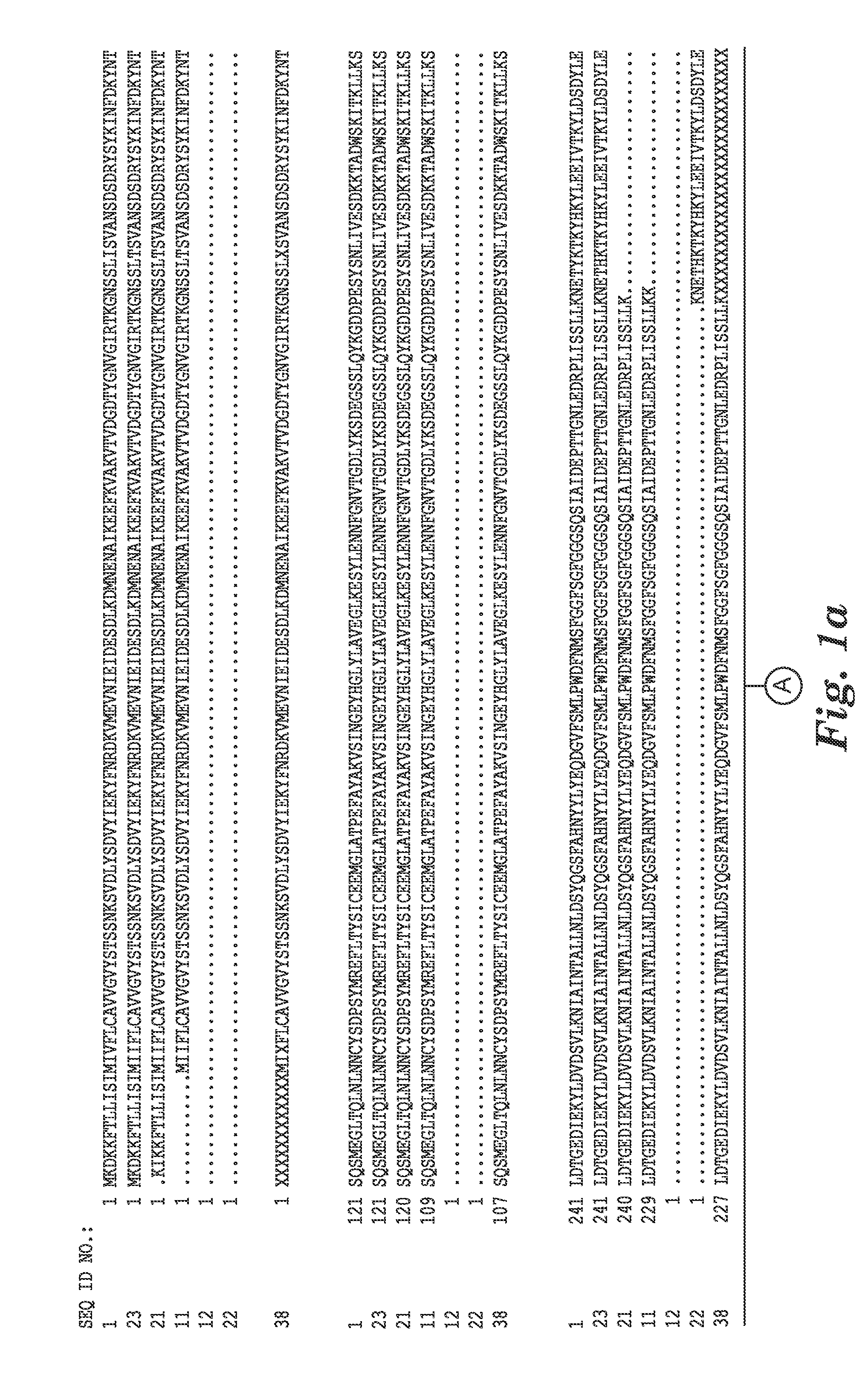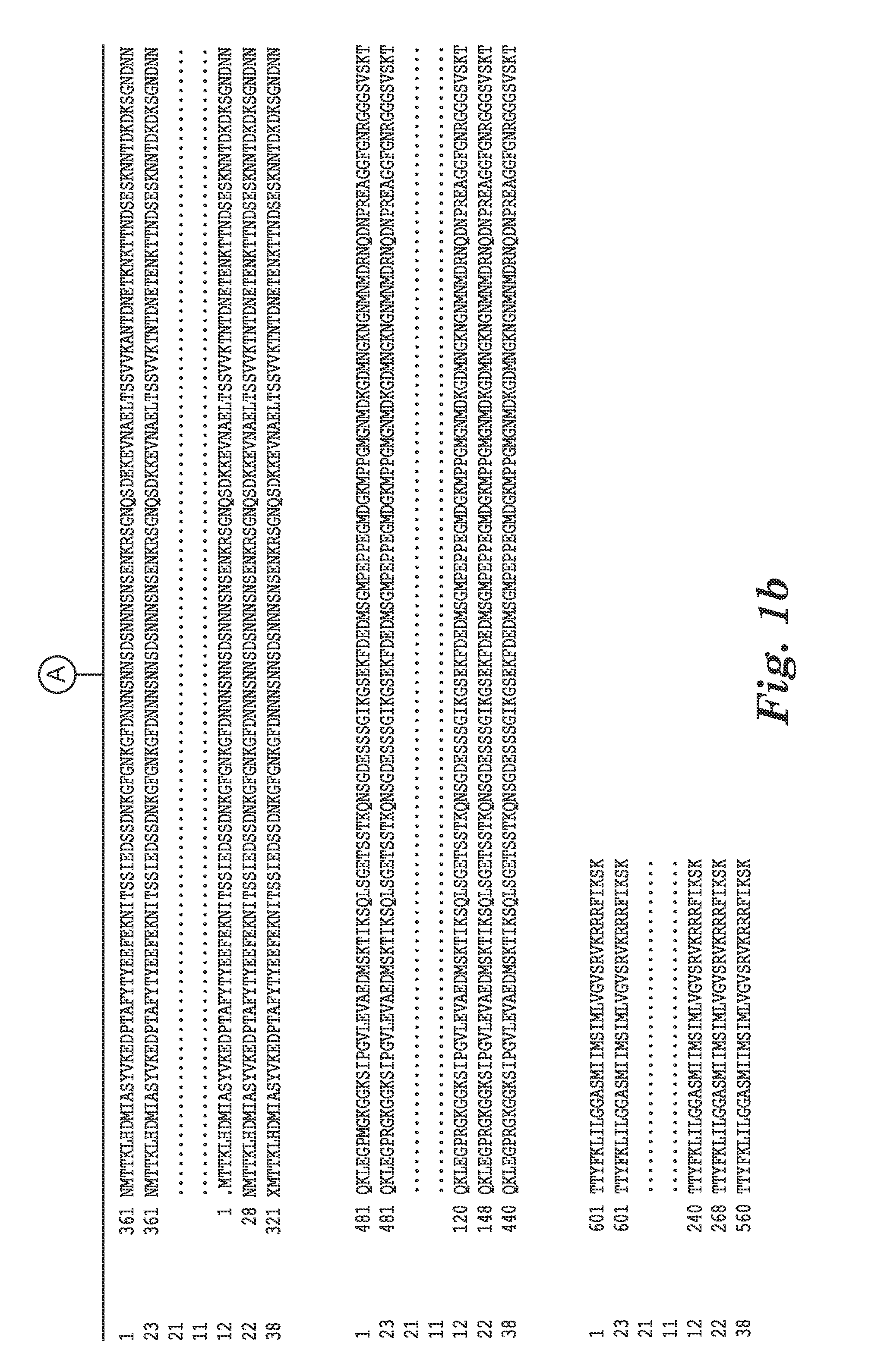Antibodies to Clostridium difficile spores and uses thereof
a technology of clostridium difficile and antibodies, which is applied in the field of antibodies to clostridium difficile spores, can solve the problems of kits not detecting i>c. difficile /i>spores, rapid methods, and no us
- Summary
- Abstract
- Description
- Claims
- Application Information
AI Technical Summary
Problems solved by technology
Method used
Image
Examples
example 1
Generation of C. difficile Spores
[0113]One tube of Brain Heart Infusion Broth (BHI) was inoculated with C. difficile (ATCC® No. 700792, American Type Culture Collection, Manassas, Va.) and incubated for twenty-four hours at 35-37° C. under anaerobic conditions. Following incubation, one milliliter (ml) aliquots of the broth culture were transferred to a minimum of four tubes containing BHI broth and then incubated for twelve days at 35-37° C. under anaerobic conditions. The broth cultures were centrifuged at 10,000 rotations per minute (rpm) for 10 minutes (min) and the cell pellet was resuspended in 10 ml of absolute ethanol for one hour at room temperature to kill vegetative cells. After one hour the suspension was centrifuged at 10,000 RPM for 10 minutes and the cell pellet was washed at least twice with sterile Butterfield's buffer. The pellet was resuspended in sterile Butterfield's Buffer and spore number per milliliter was determined by plating serial dilution on anaerobic bl...
example 2
Generation of Polyclonal Antibody to Inactivated C. difficile Spores
[0114]C. difficile spores, at a concentration of about 106 spores per ml, were treated with 5% formalin for 10 minutes to inactivate the spores. The inactivated spores were washed twice with sterile Butterfield's buffer and then resuspended in sterile Butterfield's buffer. A polyclonal antibody was raised against the inactivated spores in rabbits using standard protocols (Antagene, Inc, Mountain View, Calif.). Briefly, New Zealand White rabbits (two individual rabbits) were immunized with 1×106 / ml equivalent of inactivated spores per immunization. The immunogen was diluted to 1 ml with sterile saline and combined with 1 ml of the appropriate adjuvant. The antigen and adjuvant were mixed to form a stable emulsion which was injected subcutaneously. Rabbits were immunized on day one with antigen in Complete Freund's Adjuvant (CFA), followed by immunizations on days 20, 40, and 60 with antigen in Incomplete Freund's Adj...
example 3
Selection of C. difficile Spore-Specific Proteins for Generation of Antibodies
[0121]The complete genome sequence of C. difficile strain 630 has been determined and is available on the GenBank® sequence database maintained by the National Center for Biotechnology Information (NCBI), National Library of Medicine (NLM), National Institutes of Health (NIH). See also, Sebaihia et al., 2006, Nat. Genet; 38 (7):779-786). A thorough search of all the GenBank® entries for C. difficile was made and two spore specific proteins were picked for antibody production. One of the proteins selected was hypothetical protein CD1021 (YP—001087502), which demonstrates a conserved domain (amino acid residues 90 to 393) to the spore coat assembly protein H (cotH). The other protein selected was cell surface protein (putative N-acetylmuramoyl-L-alanine amidase, YP—001087517) which has conserved domains CW_binding—2 (putative cell wall binding repeat 2; 174 to 265, 275 to 368, 381 to 461) and Amidase—3 (N-ac...
PUM
| Property | Measurement | Unit |
|---|---|---|
| pH | aaaaa | aaaaa |
| pH | aaaaa | aaaaa |
| pH | aaaaa | aaaaa |
Abstract
Description
Claims
Application Information
 Login to View More
Login to View More - R&D
- Intellectual Property
- Life Sciences
- Materials
- Tech Scout
- Unparalleled Data Quality
- Higher Quality Content
- 60% Fewer Hallucinations
Browse by: Latest US Patents, China's latest patents, Technical Efficacy Thesaurus, Application Domain, Technology Topic, Popular Technical Reports.
© 2025 PatSnap. All rights reserved.Legal|Privacy policy|Modern Slavery Act Transparency Statement|Sitemap|About US| Contact US: help@patsnap.com


